Verdict
In the Smooth Q4, Zhiyun has managed to create a smartphone gimbal that’s packed with premium features but isn’t saddled with a high-end price tag. If you’re in the market for a gimbal can go toe-to-toe with the DJI OM 5 but at a reduced cost, then this is easily your best bet.
Pros
- As feature-rich as the DJI OM 5
- More affordable than its closest competitors
- The revamped fill light is much easier to use
- The extendable arm is a huge a boon for content creators
Cons
- ZY Cami app lacks the finesse of DJI Mimo
- A slight price hike over the Zhiyun Smooth Q3
- Extendable arm:Get the same experience as a selfie stick
- New folding design:More compact and easier to store
- Magnetic fill light:Attach the fill light and several filters when you want to
Introduction
In the Zhiyun Smooth-Q4, the DJI OM range finds its most competent rival yet – and that’s great news for smartphone filmmakers.
In the world of smartphone filming, Zhiyun has felt like the Android to DJI’s Apple. While DJI typically releases one new smartphone gimbal a year, designed to replace the previous model, Zhiyun offers a wider array of options that are designed to appeal to consumers at different price points. Strictly speaking, however, it’s Zhiyun’s Smooth-Q gimbals that are the closest to DJI’s OM range in terms of features.
Last year’s Zhiyun Smooth Q3 was a great alternative to DJI’s reigning smartphone gimbal at the time, the DJI OM 4. This was largely down to its lower price, and the inclusion of a built-in fill light to help filmmakers in low-light scenes. However, the Q3 was held back by issues in Zhiyun’s companion app, and the fill light wasn’t quite as seamless to use as it could have been.
In the time since, DJI has unleashed the terrific DJI OM 5 on the world, which left Zhiyun with some serious catching up to do, if it wanted to remain competitive. Now that the Smooth-Q4 is here, I’m happy to report that not only has Zhiyun kept a close eye on the advancements of its closest rival, but the brand has also taken note of feedback regarding the Smooth Q3. After a decent amount of testing, here’s our final verdict.
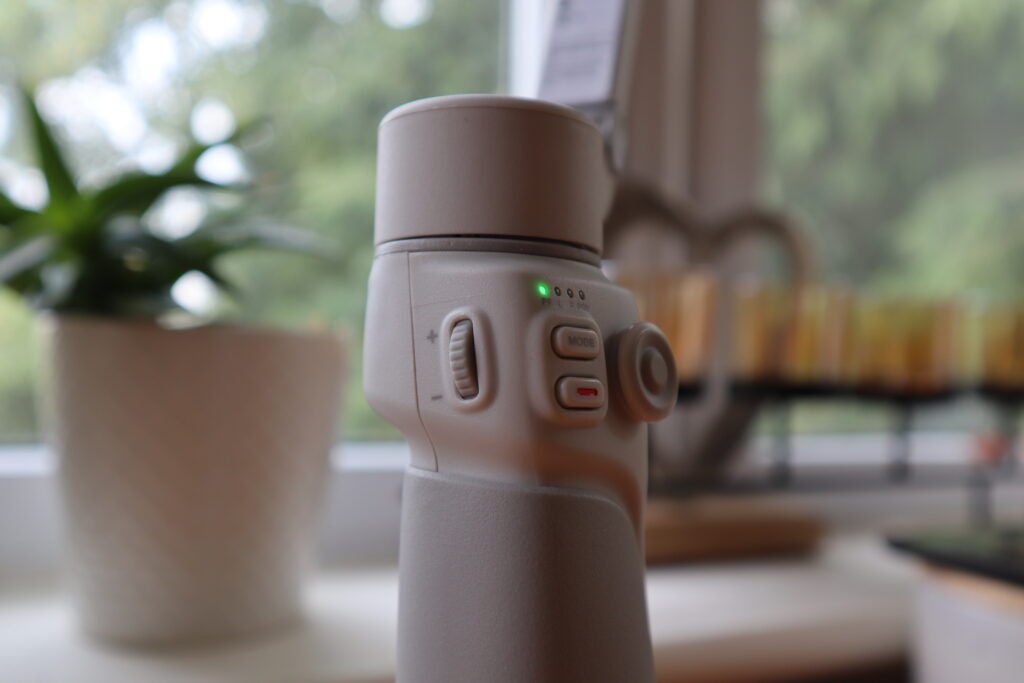
Design
- Updated folding design
- The control layout has been tweaked slightly
- An extendable arm is hidden inside the gimbal
Simply look at the Smooth Q4 and it’s clear that Zhiyun has gone back to the drawing board, when it comes to the design of the unit. The rubberised grip of the handle now extends almost the entire way around for a better fit in the hand, and the control panel has been modified to blend more seamlessly with the main body of the gimbal. All this results in a look that’s far more confident than the design of the Smooth Q3.
The buttons on the control panel remain largely the same; it’s only the zoom slider that’s undergone a major change – it’s now been replaced by a scroll wheel. Personally, I’m a bigger fan of the more precise movements that a scroll wheel affords, and it’s now far easier to get the exact distance that you’re aiming for when shooting.
These design adjustments are only one half of the equation, however; several more can be spotted if you look further up the device. For starters, the sliding mechanism that had allowed the Q3 to be stored away is now gone, replaced by a far simpler folding mechanism that allows the Q4 to whip into action more quickly.
The clasp has also been modified to be more compact – it can now be folded down when it isn’t in use to avoid becoming caught on anything. Zhiyun hasn’t fully adopted the magnetic solution offered by DJI, but it has been incorporated somewhat into the updated fill light.
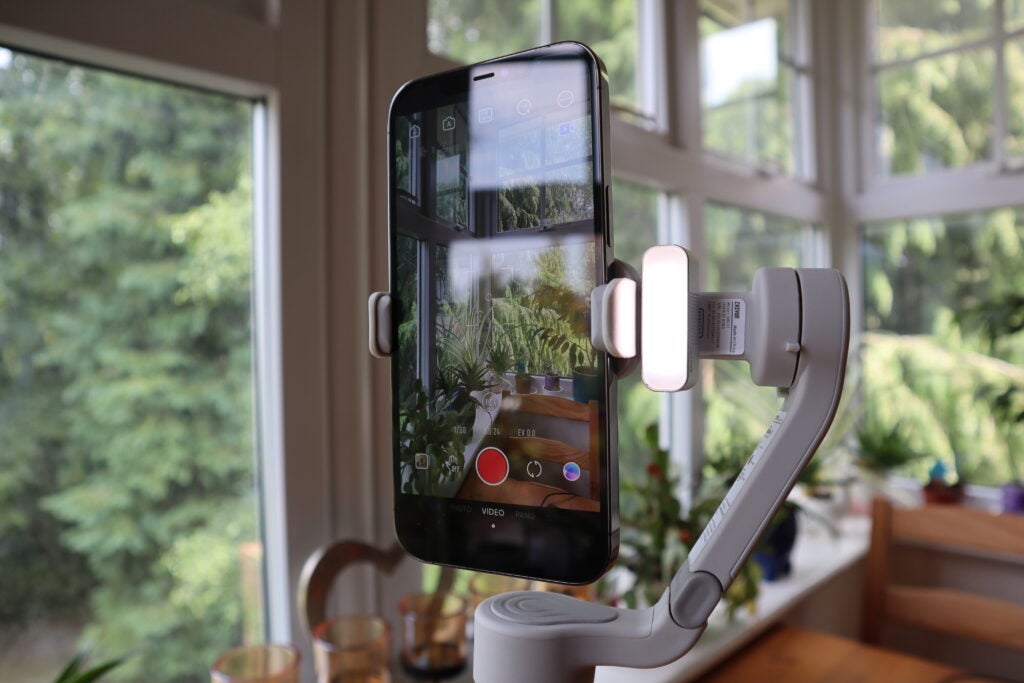
Here, the fill light isn’t bolted to the device in such a way that it can’t be removed. Instead, it’s a separate entity that snaps onto the gimbal magnetically and switches on once it’s done so. Turning off the fill light is as simple as removing it. It’s a far more seamless process, one that feels several leagues better than the clunky fill light of the Q3.
The use of magnets isn’t the only inspiration that Zhiyun has taken from DJI. however; there’s a secret hiding at the base of the gimbal’s moving parts. Just like the DJI OM 5, there’s now an extendable arm ready to use when it suits you, handy for adding more height to your shots, or even allowing you to get frames that are close to the ground without needing to awkwardly crouch down.
Standard elements such as a tripod mount and a USB-C port make a return, but with so many improvements made to the design, the Smooth-Q4 feels like an entirely different beast to the Q3. Again, the fact that Zhiyun has implemented these upgrades with minimal impact on the cost of the unit is fantastic.
App
- Lots of inspiration in-app from other users
- Camera overlay is simple to use
- ZY Cami doesn’t quite have the premium feel of DJI Mimo
If you’ve ever used DJI’s Mimo app then you might get a feeling of déjà vu when diving into Zhiyun’s own ZY Cami app. In terms of the layout, both are near-identical, although DJI Mimo keeps the aesthetic to “Dark Mode”, while the ZY Cami app is a much brighter affair.
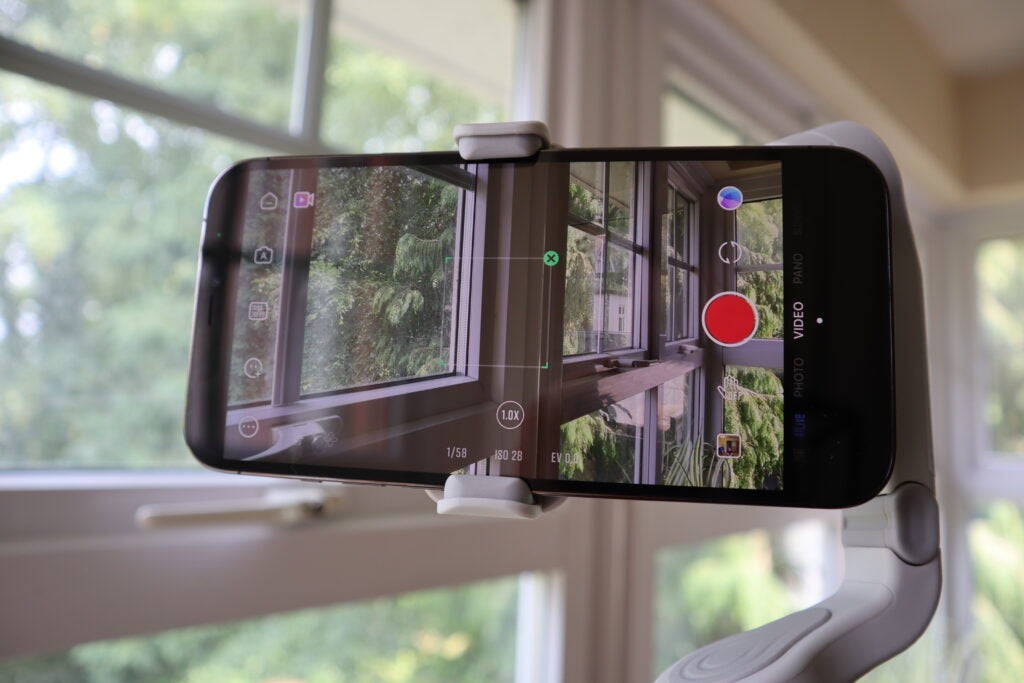
There’s a good amount of video tutorials available in the app if you ever find yourself stuck, and on the homepage you’re immediately greeted by examples of footage shot by other users. This can always be handy if you’re in need of some quick inspiration.
The real meat of the app lies in the LiveView section, which applies an overlay to the camera that lets you use a bunch of digital features in accordance with the Q4 gimbal. There are standard modes such as Timelapse, which is always great for atmospheric shots, and there’s MagicClone Pano, which lets you take intentionally – and, sometimes, unintentionally – hilarious shots where you can have multiple versions of a person in the same picture.
The best feature by far is still SmartFollow 3.0, which, just like DJI’s Active Track, lets you select a subject in the frame that the gimbal will then follow, no matter where you move. For vlogging, it’s an absolute godsend, since it means you don’t have to keep checking that you’re in frame.
As you might expect, there’s an editing suite within the app, too, and it’s divided into two sections: Create and Quick Edit. The former offers a decent amount of customisation, with the ability to add overlays, text, music and even filters. It isn’t as feature-rich as LumaFusion, for example, but it gets the job done. The latter is ideal for short, shareable clips intended for social media; the software uses AI to do most of the editing for you.
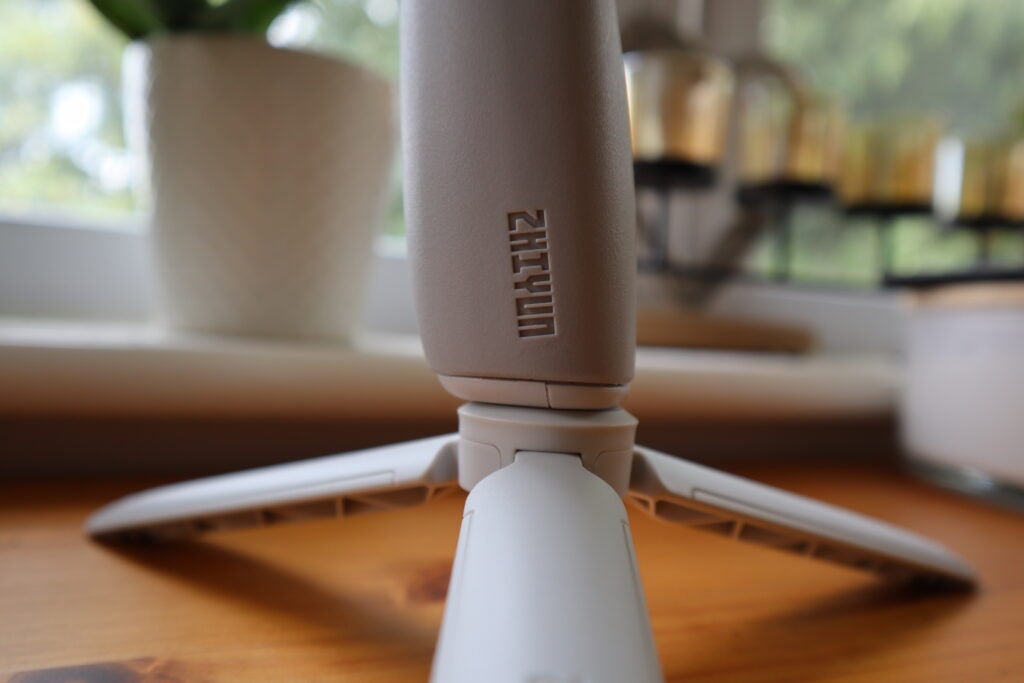
There are some resources such as additional templates and exclusive music tracks that are locked behind a paywall for ZY Prime, but there isn’t enough to make it feel as though the ZY Cami app is lacking in its default state. Overall, it offers a solid experience that, while lacking the finesse of DJI Mimo, does a decent job in emulating its best bits.
Stabilisation and Performance
- The gimbal does a great job of staying on track
- The new magnetic fill light is well designed
- Battery life remains fantastic
At its core, the Zhiyun Smooth-Q4 is a blast to use. I’ve put a few gimbals through their paces in my time, which can become overwhelmed by too much movement; but this wasn’t ever the case with the Smooth-Q4. Instead, the gimbal hasn’t kicked back all that much as I’ve tried to push the motors to their limits.
The same goes for those occasions I extended the arm hidden within the gimbal itself. This surprised me, since I’ve been using the fairly heavy iPhone 12 Pro Max for this review and I expected some resistance in this area.
As was the case with the Q3, you can swap between five different modes on the gimbal itself: Pan Follow, Lock, Follow, POV and Vortex. All of these modes feel distinct, and while I personally jump between the Pan Follow and Lock modes, the others are sure to be appreciated by those who prefer to have more variety in their shots. I only wish that it was easier to swap between those modes; having to double-press the mode button to go backwards is still cumbersome. A simple slider would be a much better alternative.
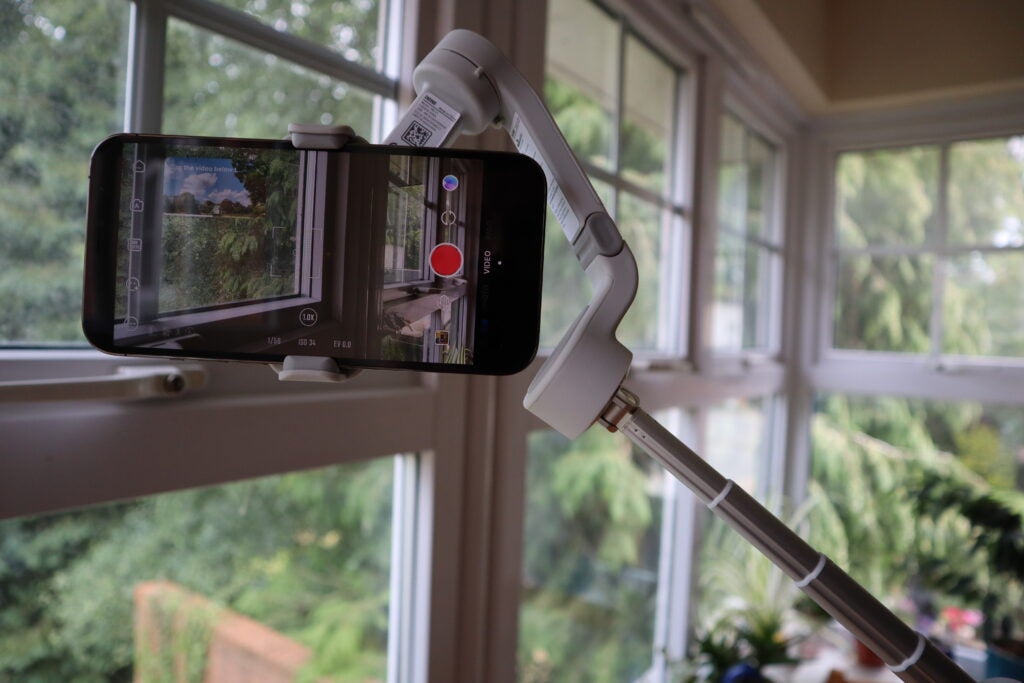
Similarly, the rear-facing trigger could do with being more tactile. Misses are frequent enough to be a major issue, but this has happened when I’ve tried to recentre the gimbal or move from Portrait mode into Landscape mode.
Nevertheless, when everything has worked as it should, the Smooth-Q4 is a great deal of fun. Aforementioned features such as MagicClone Pano and Smart Follow are brilliantly executed, and they make the process of obtaining eye-catching footage a super-easy endeavour – although it’s worth pointing out that all of these features work far better in well-lit scenes. Clone Pano, in particular, can trip up in low light, so it’s something to be aware of.
Luckily, the magnetic fill light is ready to help you out in such situations. The fill light itself is now far easier to use, as you can adjust the brightness by simply pressing down on the gimbal’s scroll wheel. This is a far more seamless affair than the unresponsive design of the Q3’s fill light.
There are even colour filters included, if you want to shake up the atmosphere of a particular shot. Overall, it’s a fantastic feature to have, but what I’d like to have seen is the ability to add the fill light to either side of the clasp. With only one side given the magnetic treatment, it isn’t possible to use the fill light in conjunction with the rear-facing cameras when in Portrait mode – with the arm of the gimbal itself getting in the way. Hopefully, this is an issue that will be rectified in next year’s update.
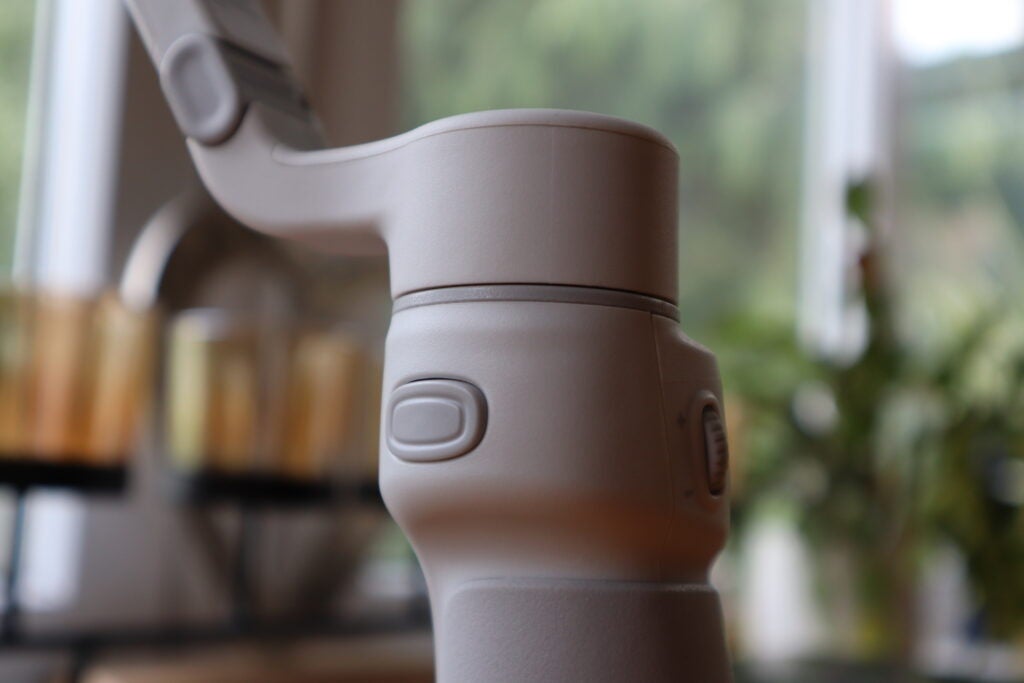
The 15-hour battery of last year remains unchanged, but there are no complaints on that front. That 15-hour limit is still more than sufficient to get you through several shoots. And, aside from topping up the device straight out of the box, I haven’t needed to charge the Smooth-Q4 during the testing period for this review.
Should you buy it?
You want a fully featured, affordable gimbal: Given that the Smooth-Q4 has almost all the major features of the pricier DJI OM 5, it’s hard to think of many reasons, outside of DJI’s superior app, you wouldn’t just pick up Zhiyun’s gimbal instead.
You’re on a very strict budget: While it remains more affordable than its competitors, the Smooth-Q4 has had a noticeable price hike over the Smooth Q3. If your budget is capped at £100, then last year’s model is still a great pick.
Final Thoughts
The Zhiyun Smooth Q4 is a triumph. It’s a steadfast example of what can happen when a company not only listens to consumer feedback, but also pays attention to the trends of the market and the success of its competitors.
With the inclusion of the extendable arm and a totally revamped design and fill-light system, the Smooth-Q4 is great fun to use, and a very powerful tool for anyone making content using their smartphone. The ZY Cami app still has a way to go before it can match DJI’s offering, but with the Smooth-Q4 being a fair bit cheaper than the OM 5, the hardware has never felt as closely matched in terms of quality.
FAQs
The Smooth Q4 can work with both iPhones and Android phones that are compatible with the ZY Cami app.
There is a USB-C port for charging and data transfer on the Smooth Q4.
















